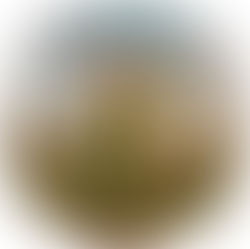Roots of Intelligence
For many centuries, Western rationality postulated its separation from nature as synonyms with progress and development. Human beings erroneously entitled themselves as the central species on this planet, and believed that ecology was an untouchable and distant realm. We are nature. Going further: Nature is humanity's original sanctuary, connecting everything that is alive. In 2020, at the height of the COVID-19 pandemic, which forced everyone around the globe into isolation, Stefano Mancuso was interviewed by the Spanish newspaper La Vanguardia, where he called himself the father of plant neurobiology, a field that was trivialized for years, which studies the vegetative collective technology. The Italian author and researcher focuses on the innate collaboration occurring amongst plants, which represent over 80% of life on Earth. Mancuso regrets that our behavior is based on the struggles of animal species, which in turn represent only 0.3% of living things. Vegetation is interconnected, it acts as a supportive community, organizes itself to cater to their more fragile members, travels around the world and interacts through rhizomatic networks of communication and assimilation. It is possible that the notion of rhizome, so obvious amongst plants, has never been so fundamental to our species. In his interview for La Vanguardia, Mancuso affirmed that the sensation of being cooped up at home, experienced during quarantine, made him feel exactly like a plant, and pointed out: "We learned that when we are stuck, we tend to pay more attention to our surroundings". This exact sensation, of being attentive to our context and nature, especially during the pandemic, inspired the exhibition and the seven artists present in Roots of Intelligence. Plant intelligence influences many of us. There is a contemporary desire for reconnection with our ecosystem, cultivating the sacred and integrated qualities of nature and their healing and collaborative powers. Roots of Intelligence shows how these artists, like Stefano Mancuso, explore the paths for better dialogues and relationships with all living systems. The exhibition showcases pieces that distinguish details and materials, such as Chiara Banfi's watercolors and crystals, as well as Marcelo Pacheco‘s oil paintings. We explore appreciation and attention to animal and natural living structures, found in Gabriel Giucci's paintings and in Paula Juchem's sculptures. From micro explorations, we venture into macro scenarios, and start to truly feel the living and interconnected atmosphere of the show. This is the case in Fernanda Feher's dreamy landscapes and Michel Onguer's explosion of greenery. Lastly, the ecosystem is delivered to our eyes and presence through the plasticity and abstraction of Renato Rios' and Sarah Heinemann's oil paintings. Stefano Mancuso highlights how artists are more perceptive of changes in ideas and the collective consciousness, and how art has understood, even before scientists, that plants are the future – a perception that is at the core of this show. What we observe is an enormous biosphere in convergence. One of the key learnings from the plant world is that most plants do not compete, they cooperate. This is also the greatest learning we can take from the effort and the poetics of these artists and their works.
Texto de Iza Dezon





















